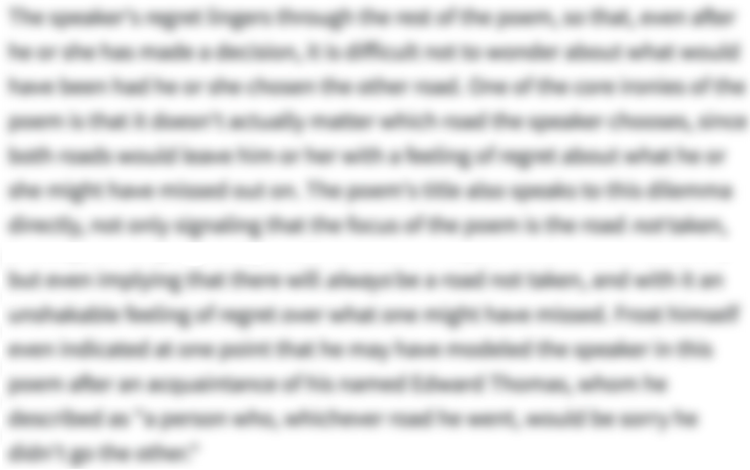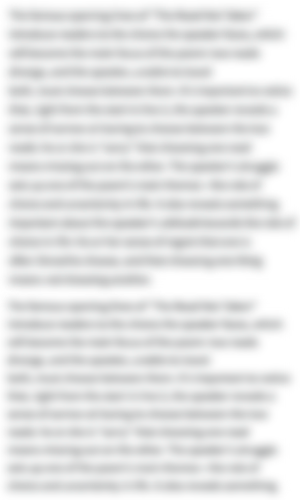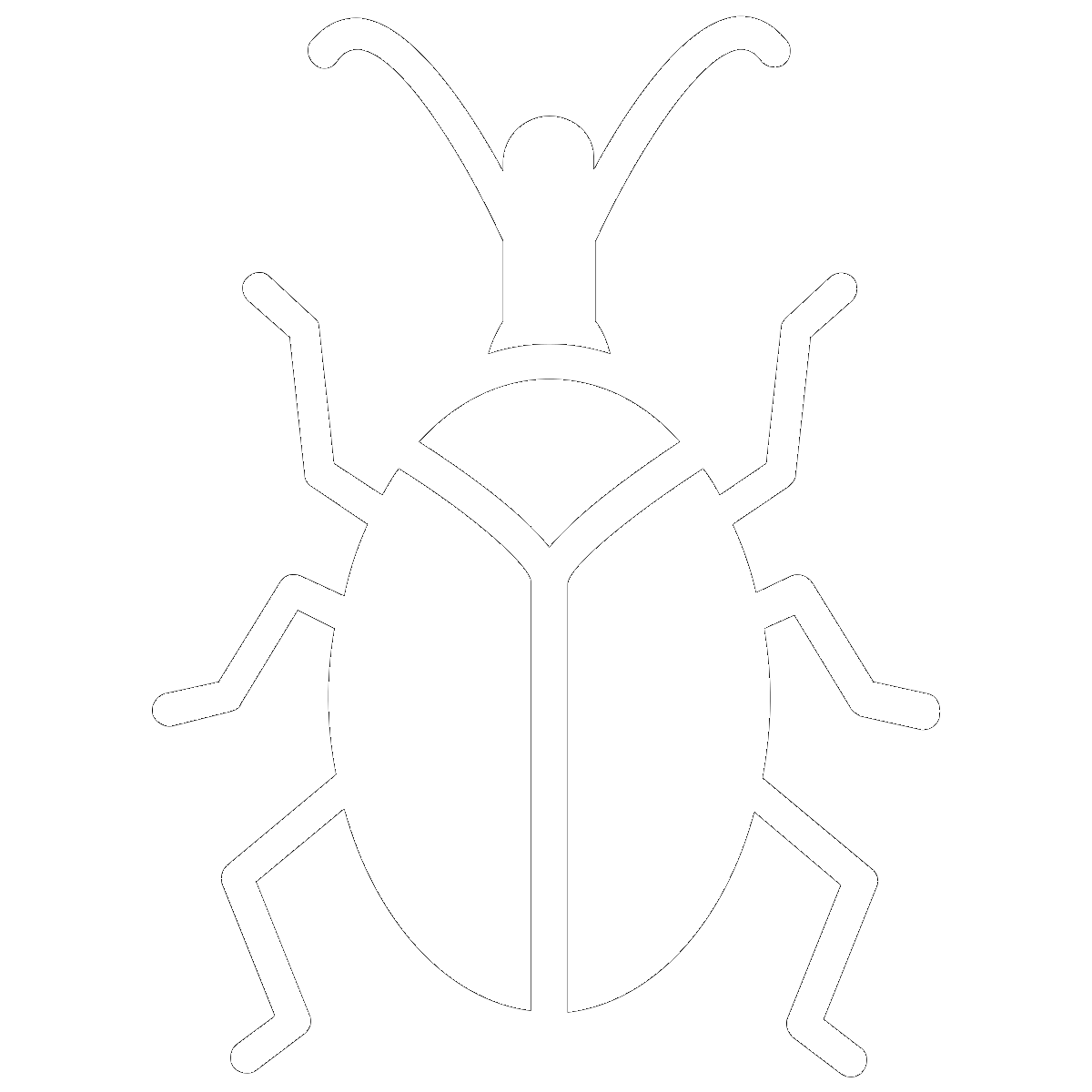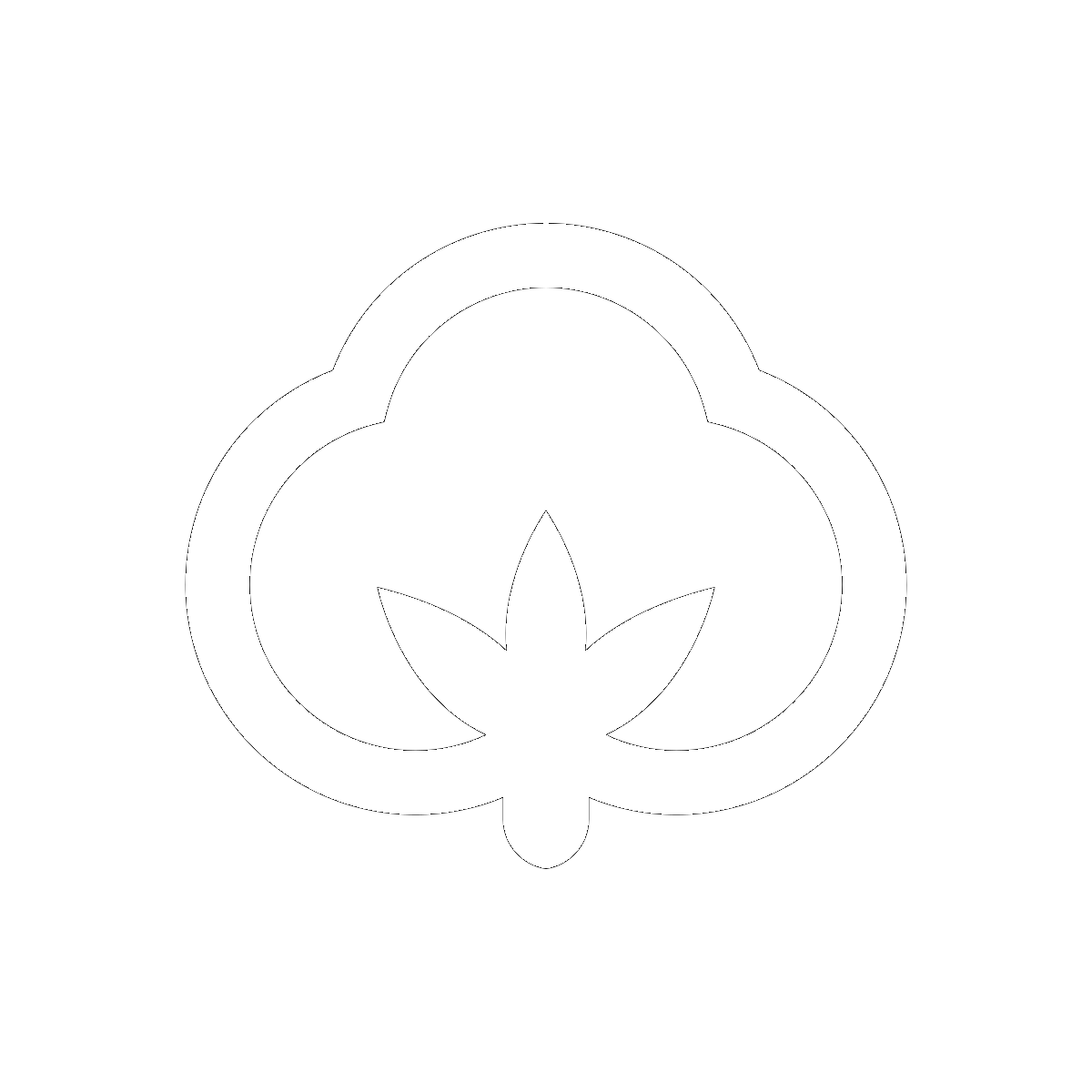The Full Text of “November Cotton Flower”
1Boll-weevil’s coming, and the winter’s cold,
2Made cotton-stalks look rusty, seasons old,
3And cotton, scarce as any southern snow,
4Was vanishing; the branch, so pinched and slow,
5Failed in its function as the autumn rake;
6Drouth fighting soil had caused the soil to take
7All water from the streams; dead birds were found
8In wells a hundred feet below the ground—
9Such was the season when the flower bloomed.
10Old folks were startled, and it soon assumed
11Significance. Superstition saw
12Something it had never seen before:
13Brown eyes that loved without a trace of fear,
14Beauty so sudden for that time of year.
-
“November Cotton Flower” Introduction
-
The sonnet "November Cotton Flower" appears in Jean Toomer's experimental collection Cane (1923). The book mixes poetry and prose, chronicling the experiences and histories of Black Americans in both the rural South and the urban North. "November Cotton Flower" paints a desolate picture of natural decay—perhaps symbolizing the trauma of slavery and segregation—interrupted by the surprising appearance of beauty: the out-of-season cotton flower. The poem leaves the flower's meaning up for interpretation, suggesting that it might represent new hope even as it serves as a reminder of brutality.
-
-
“November Cotton Flower” Summary
-
When cotton-eating beetles and the winter's chill arrived, the cotton stalks looked tarnished and time itself seemed tired. The cotton, as rare as snow in Georgia, was disappearing. The stream was so shrunken and sluggish that it couldn't move the autumn leaves aside. A terrible drought had made the soil dry up the streams. Thirsty birds died in wells dug deep into the earth. This was what was happening when the cotton flower suddenly appeared. The elders were amazed, and witnesses soon attached significance to the flower. Superstitious people saw something new and unexpected in it: brown, loving eyes that showed no fear, and the surprising, untimely arrival of something beautiful.
-
-
“November Cotton Flower” Themes
-

Adversity and Hope
"November Cotton Flower" is a sonnet about hope blooming, like certain flowers, in the harshest of environments. Set against the historical backdrop of American slavery and racial segregation, the poem tells readers how the cotton flower of the title miraculously “bloomed” amid devastating natural conditions (including insect infestation and drought). Through this image, the poem emphasizes both the importance of hope and the difficulty of finding and maintaining hope under awful circumstances. This flower represents an especially fragile and complicated hope, because it isn't just beautiful; as a crop once picked by enslaved people, it's also a symbol of slavery itself. On the one hand, then, it suggests that new life and "beaut[iful]" possibilities can grow in adversity; on the other, it's a reminder of terrible oppression. Any optimism it inspires (such as hope for social progress) is complicated by the horrors of what's come before—and what might happen in the future.
The poem’s description of terrible weather in the southern U.S. recalls the history of American slavery and racism, which is inseparable from the region's cotton industry. An infestation of boll-weevils (cotton-loving beetles) and "the winter's cold" have devastated the cotton plantations, making cotton itself as rare “as any southern snow.” A drought has also dried up the land, damaging life in various forms. Birds, so often symbols of hope and freedom, struggle to stay alive; they've been getting stuck and dying in wells below the ground. Since the cotton flower and southern setting are linked with the history of American slavery, the suffering in the natural world metaphorically evokes the human suffering of Black Americans.
As if in a miracle, the cotton flower somehow blooms under these seemingly hopeless conditions, bringing a fragile sense of beauty and hope. "Old folks," who have seen many seasons, are amazed that the flower could suddenly flourish in this environment. To the "Superstitio[us]," the flower takes on "Significance," seeming to represent the triumph of beauty, love, and growth over hatred and destruction. This "Beauty" seems "sudden," as if it has come out of nowhere, and conjures up a vision of "Brown eyes that loved without a trace of fear." The mention of color gestures towards the poem's background of slavery and segregation (based, of course, on skin color). But the "brown eyes" could also refer to the flowers themselves, perhaps symbolizing all the people who suffered enslavement and racism—and a future of love and fearlessness for themselves and their descendants. It's as if the poem glimpses a future of racial justice, without pretending that this is anything more than a hopeful vision.
Thus, as both a symbol of beauty and possibility and a reminder of suffering, the flower can only offer an uncertain hope at best. The poem doesn't simplify or read too much into the flower's sudden arrival. Instead, it interprets this arrival in deliberately ambiguous terms. Indeed, the old folks' "Superstition" might reflect a fear that the flower's blooming is a kind of trick or deception. It's possible, in other words, that this sign is hopeful, pointing toward a future of "lov[ing] without a trace of fear." But it's equally possible that the arrival of the cotton flower, which evokes such a terrible history, will only usher in a new season of oppression and disappointment. Its blooming thus announces not only a new hope but the grim uncertainty surrounding that hope.
- See where this theme is active in the poem.
-
-
Line-by-Line Explanation & Analysis of “November Cotton Flower”
-
Lines 1-2
Boll-weevil’s coming, and the winter’s cold,
Made cotton-stalks look rusty, seasons old,The first couplet (in fact, the first eight lines, or octave) of the sonnet portrays a landscape full of death and misery.
The poem is set in the southern U.S., a region historically linked with the growth and trade of cotton. Cotton was central to the economy of states like Georgia (where much of Toomer's Cane is set); it was also a main driver of the transatlantic slave trade, which forced millions of enslaved Africans to work on plantations in brutal conditions. The very mention of cotton in this setting gestures towards this tragic history. Though slavery had been abolished by the 1920s (when the poem was published), racial segregation and tension were a daily reality for Black Americans. Some small cotton farms were Black-owned, but white landowners still kept many Black workers and tenant farmers in dire poverty.
The "Boll-weevil's coming" has meant disaster for the region. This cotton-loving beetle has chomped through the plantations and caused great economic damage. Symbolically, the poem may be linking this predatory pest with the greed and destruction of the cotton industry. Between the beetle's appetite and the "the winter's cold," the crop has basically failed this year. The stalks look "rusty," or reddish and decayed. There's a weariness in the atmosphere (the "seasons" seem "old"), reflecting the time and effort wasted on this year's spoiled cotton crop.
Notice how lines 1-2 use harsh sibilance, alliteration, and other consonance to conjure up an inhospitable environment:
Boll-weevil’s coming, and the winter’s cold,
Made cotton-stalks look rusty, seasons old,The tough /k/ alliteration and /t/ consonance, together with the hissing or buzzing of the /s/ and /z/ sounds, add up to a series of unpleasant sounds. (Try saying the lines out loud!) Sonically, it's as though a chill wind blows through the poem, evoking the desolation of this wintry scene.
-
Lines 3-4
And cotton, scarce as any southern snow,
Was vanishing;

Unlock all 225 words of this analysis of Lines 3-4 of “November Cotton Flower,” and get the Line-by-Line Analysis for every poem we cover.
Plus so much more...
Get LitCharts A+ -
Lines 4-8
the branch, so pinched and slow,
Failed in its function as the autumn rake;
Drouth fighting soil had caused the soil to take
All water from the streams; dead birds were found
In wells a hundred feet below the ground— -
Lines 9-11
Such was the season when the flower bloomed.
Old folks were startled, and it soon assumed
Significance. -
Lines 11-14
Superstition saw
Something it had never seen before:
Brown eyes that loved without a trace of fear,
Beauty so sudden for that time of year.
-
-
“November Cotton Flower” Symbols
-

Natural Decay
The first eight lines of the poem—the octave of the sonnet—portray a bleak agricultural landscape in the southern U.S. Pests have ruined the cotton crop, it's brutally cold, and the lack of rainfall has caused a major drought. Even birds can't find enough water: they're dying in droves, getting stuck "in wells a hundred feet below the ground" as they try to quench their thirst.
Given the context, this desolation could symbolize the oppressive landscape of American history. The U.S. cotton industry has historically been linked with centuries of slavery and racism, along with other injustices in American society. Like this deeply flawed society, nature is essentially failing, here, in its quest for harmony and balance. It's as though an internal war has gripped the landscape—"Drouth fighting soil"—causing widespread suffering for all kinds of creatures. Similarly, oppressive systems damage all of society, preventing it from thriving to its fullest potential.
- See where this symbol appears in the poem.
-

The November Cotton Flower
When the cotton flower blooms out of season, surprised observers immediately view it as a symbol. It assumes great "Significance" and "startle[s]" the "Old folks" who see it. In other words, its unexpected arrival seems to mean something—even if it's not clear what.
The flower can be interpreted in two seemingly contradictory ways. On the one hand, the cotton plant is so closely linked with the history of slavery that the flower's arrival, though a kind of small miracle, could be seen as a bad omen. Perhaps it signifies a new era of inequality and racism—its late arrival suggesting that humankind's worst attributes have the capacity to flourish in any "season."
On the other hand, the flower is a beautiful sight. "Superstiti[ous]" community members seem to view it as a hopeful sign, perhaps even a vision of future racial harmony: a world in which "Brown eyes [...] lov[e] without a trace of fear."
- See where this symbol appears in the poem.
-
-
“November Cotton Flower” Poetic Devices & Figurative Language
-
Alliteration
Alliteration (including sibilance) occurs frequently throughout "November Cotton Flower." For the most part, it creates a harsh sound that matches the poem's unforgiving, wintry atmosphere. This effect is most prominent in the opening lines:
Boll-weevil’s coming, and the winter’s cold,
Made cotton-stalks look rusty, seasons old,
And cotton, scarce as any southern snow,
Was vanishing [...]Try saying these lines out loud—it's almost like teeth chattering! The repeated /k/ sounds are hard and unpleasant, while the /s/ sounds, in this context, sound whispery and eerie, like a cold wind blowing across the land. Additional /k/ consonance (e.g., "stalks") and internal /s/ sibilance (e.g., "rusty," "scarce") contribute to this evocative soundscape, too.
Sibilance hits new heights around lines 9-12:
Such was the season when the flower bloomed.
Old folks were startled, and it soon assumed
Significance. Superstition saw
Something it had never seen before:(Note that "assumed" is alliterative here because that shared /s/ sound lands at the start of a stressed syllable.) This is the moment when the cotton flower appears, supposedly bringing with it a new sense of beauty and hope. In the absence of harsher alliteration (/k/ sounds, etc.), these /s/ sounds have a soothing quality that might reflect the more optimistic mood. But they also subtly echo those bleak opening lines, perhaps suggesting that any hope is tempered by the ongoing drought—along with whatever social conditions (racism, poverty, etc.) the drought may symbolize.
- See where this poetic device appears in the poem.
-
Caesura


Unlock all 231 words of this analysis of Caesura in “November Cotton Flower,” and get the poetic device analyses for every poem we cover.
Plus so much more...
Get LitCharts A+ -
Consonance
-
Enjambment
-
Personification
-
Sibilance
-
Simile
-
-
“November Cotton Flower” Vocabulary
Select any word below to get its definition in the context of the poem. The words are listed in the order in which they appear in the poem.
- Boll-weevil
- Cotton-stalks
- Southern
- Branch
- Rake
- Drouth
Boll-weevil-
A small beetle that loves eating cotton. The boll weevil caused huge damage to the cotton industry during the early 20th century.
- See where this vocabulary word appears in the poem.
-
Form, Meter, & Rhyme Scheme of “November Cotton Flower”
-
Form
"November Cotton Flower" is a sonnet comprised entirely of rhyming couplets. This unusual form is sometimes known as a couplet sonnet or Clare sonnet (after the 19th-century poet John Clare).
Apart from its rhyme scheme, the poem follows the standard sonnet conventions: it has fourteen lines, is written in iambic pentameter (i.e., its lines generally follow a da-DUM, da-DUM, da-DUM, da-DUM, da-DUM rhythm), and contains a noticeable turn (sometimes known as the "volta").
The turn occurs in the typical place, dividing the poem into an octet (eight lines) and a sestet (six). Here, it marks the blooming of the flower against the bleak backdrop described in the first eight lines. This twist, or element of surprise, formally mirrors the reaction of the "Old folks" who are "startled" to see the cotton flower in November. The placement of the volta at the ninth line is a conventional feature of the Petrarchan sonnet (as opposed to the Shakespearean).
-
Meter
"November Cotton Flower" uses iambic pentameter: lines of five metrical feet that follow an unstressed-STRESSED syllabic pattern (da-DUM | da-DUM | da-DUM | da-DUM | da-DUM). This is both the most common meter in English poetry and the standard meter of the sonnet form. Here's how this meter works in line 3:
And co-| tton, scarce | as an-| y south-| ern snow,
The poem's meter remains fairly consistent, but its flow is frequently disrupted by caesuras; that is, its sentences often pause or end in the middle of lines. This effect mimics the way the "drouth" (drought) disrupts the flow of water and causes misery throughout the poem's setting.
Sometimes, the poem varies its meter in ways that correspond to its meaning. For example, the phrase "dead birds" in line 7 forms a metrical foot of two stressed syllables (a spondee instead of an iamb). This weighty sound suits the image of fallen, lifeless birds. Line 11 omits a stressed syllable in the third foot:
Signi- | ficance. | Su- | persti- | tion saw
This omission makes the mid-line pause (caesura) even more pronounced, lending greater weight—or significance—to the word "Significance."
-
Rhyme Scheme
The poem is a sonnet that uses rhymed couplets throughout, making its rhyme scheme:
AABBCCDDEEFFGG
Though rhyme is a normal feature of sonnets, this all-couplet version of the form is unusual. It's sometimes called a couplet sonnet or Clare sonnet, after the 19th-century English poet John Clare. In fact, Toomer's use of this form might be a subtle homage or allusion to Clare, whose poems typically dealt with rural settings—just as "November Cotton Flower" does. The consistent couplets have a simple, almost folksy quality that suits this poem about farming and rural "folks" (line 10).
All of the rhymes in the poem are exact, with the exception of the imperfect rhyme ("saw"/"before") in lines 11-12—though this rhyme would be close to perfect in some southern American accents!
-
-
“November Cotton Flower” Speaker
-
"November Cotton Flower" isn't much concerned with the identity of its speaker. Instead, the speaker serves as an omniscient narrator, able to describe the bleak landscape in detail and report the feelings of the community when the flower unexpectedly arrives (line 9). There's a sense that the speaker knows this region well and can comment on it with authenticity and experience. In that sense, the poem's voice is typical of Toomer's book Cane, in which "November Cotton Flower" appears (Cane consists of various prose and verse fragments from different perspectives).
-
-
“November Cotton Flower” Setting
-
The poem is set in the southern U.S.—most likely Georgia—during the early 20th century. The boll weevil was particularly devastating for the cotton industry during the 1920s, which is also when Toomer published the book (Cane) in which this poem appears.
The speaker paints a bleak picture in which nature is struggling. The weevil has wreaked havoc, and even though it's only November, the winter is already miserable. A drought has caused streams to dry up, and birds are dying from thirst. All in all, the setting is pretty apocalyptic! Symbolically, this bleakness may be meant to evoke the horrors of slavery and the racism associated with the South and cotton production.
But this initial picture forms a dark backdrop against which the cotton flower can bloom and shine. The flower seems like a small triumph over the poem's setting, perhaps even a fledgling symbol of hope. That said, the poem is careful not to appear too optimistic.
-
-
Literary and Historical Context of “November Cotton Flower”
Literary Context
Jean Toomer was a poet, playwright, and novelist who lived from 1894 to 1967. He is most famous work is Cane, an experimental novel that chronicles the experience of Black characters across the American North and South. Cane, published in 1923, features a variety of voices, styles, and forms, including both poetry and dialogue.
"November Cotton Flower" is one of the numerous poems in Cane, and it appears, ominously, just after a rat has been accidentally slain in the preceding poem, "Reapers." Cane was well-received at the time of publication and is now considered a groundbreaking work of American literature and an important example of High Modernism. Modernist artists and authors like Toomer sought to break free from traditional forms and wanted to explore new modes of self-expression as well as some of the darker elements of human nature. Toomer's Modernism is clear in this poem itself, which puts a twist on the classic sonnet form.
Toomer is also often linked with the Harlem Renaissance, a golden age of creativity and production among Black artists and intellectuals that began in the Harlem neighborhood of New York City. Toomer himself bristled at this association, however; while his work showed a deep interest in and respect for Black experiences, Toomer did not want to be perceived solely through the lens of his race.
Historical Context
Toomer wrote Cane, a novel that spans the American North and South, during what's known as the Great Migration. This period, lasting from roughly 1916 to 1970, involved the mass migration of Black Americans from the South towards the more urban environments of the North, West, and Midwest.
The Great Migration was spurred by the desire to escape the racist Jim Crow policies still dominating the Deep South throughout the early 20th century. Though slavery had been abolished in 1865, racial segregation and violent discrimination remained rife across the region. (It should be noted, however, that the North was no racial utopia, and attacks on Black Americans happened throughout the country.) The Harlem Renaissance grew out of this mass migration, as many Black artists and intellectuals settled in New York City.
Modernism, meanwhile, stemmed in part from artists' disillusionment with society—and its supposed technological progress—following the enormously violent First World War.
-
More “November Cotton Flower” Resources
-
External Resources
-
A Harlem Renaissance Introduction — Learn more about the cultural movement with which Toomer was often linked—despite his protests.
-
The Great Migration — Learn more about the mass movement of Black Americans out of the Deep South in the mid-20th century.
-
Toomer's Biography — An in-depth article about Toomer's life.
-
Toomer and Race — An article exploring Toomer's attitude towards racial division.
-
America, Cotton, and Racism — A podcast exploring the role of cotton production in the American economy and its relationship with slavery and oppression.
-
-








